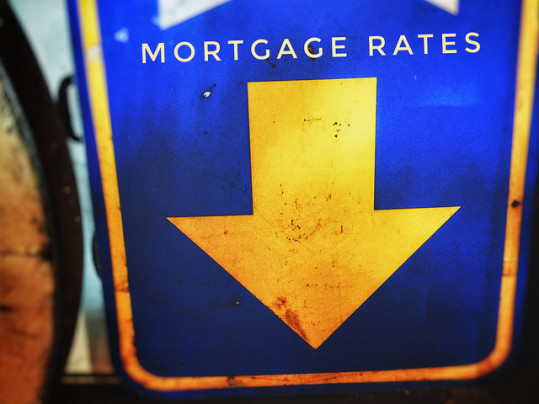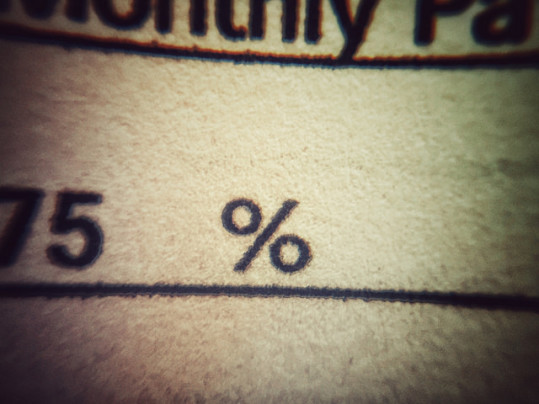When it comes to buying a house, most people focus first on what’s going on inside the house. The size of the kitchen, the number of bedrooms, closets, storage, etc., are all top concerns. But, according to a recent survey from the National Association of Realtors, access to outdoor recreation is nearly as important to most home buyers. Respondents listed benefits such as better health, an appreciation of nature, and a greater sense of community among the reasons they believed it was important to be close to outdoor features. And it wasn’t a small number, either. There were large majorities that said outdoor recreation was either very or somewhat important to them. In fact, 56 percent of participants said it was very important and an additional 30 percent said it was somewhat important. Not surprisingly, there was a slight difference depending on where respondents lived. For example, in the West, 65 percent of those surveyed said outdoor recreation was very important to them, while just 51 percent felt the same way in the Midwest. Still, it’s clearly something to think about when searching for a home to buy – whether you’re buying a home by the water or just looking for something close to a neighborhood park. More here.
Archive for April 2017
Rates Fall To Lowest Level Since November
Just after last year’s election, average mortgage rates began increasing. The rise was largely seen as a sign of things to come. However, rates have now begun dropping from their post-election highs. In fact, according to the Mortgage Bankers Association’s Weekly Applications Survey, average mortgage rates for 30-year fixed-rate loans with conforming loan balances are now at their lowest level since last November. Lynn Fisher, MBA’s vice president of research and economics, told CNBC last week’s drop was largely related to the French election. “The drop was driven by continued investor concerns about the French election, though Sunday’s first-round voting results apparently have alleviated some investor fears,” Fisher said. Whatever the case, falling mortgage rates boosted the number of homeowners seeking to refinance. The MBA’s refinance index rose 7 percent from the previous week. The purchase index, which measures the number of prospective borrowers applying for loans to buy homes, was unchanged from the week before. The MBA’s weekly survey has been conducted since 1990 and covers 75 percent of all retail residential mortgage applications. More here.
New Homes Are In High Demand This Spring
New estimates from the U.S. Census Bureau and the Department of Housing and Urban Development show new home sales at an 8-month high in March. Sales were 5.8 percent above February’s rate and 15.6 percent higher than at the same time last year. The March results were the second best reading since 2008 and easily surpassed economists’ expectations. That’s encouraging news for the start of the spring season and could help boost the number of new homes that get built this year. And, at a time when inventory is low, that’s important. As more new homes are built there will be more options available for buyers, which will help balance the market and moderate price increases. That’s why new home construction is a closely watched indicator of the health of the overall housing market. In other words, whether you’re in the market for a new home or not, the new home market will have an affect on your home search. Also in the report, the median sales price of new homes sold in March was $315,000, which is a jump from the month before but only 1.2 percent above one year ago. At the current sales pace, there was a 5.2-month supply of new homes available for sale at the end of the month. More here.
The Top Factors That Drive 1st Timers To Buy
No two paths to homeownership are exactly the same. There are too many variables for that to be true. But though there are many different paths, there are a few common factors that play a role when first-time buyers decide to purchase a house. According to a recent survey from Bank of America, the first – and most obvious – factor is money. Just over half of respondents said having the financial means to purchase a home is what would ultimately be the decider. But though money is an undeniable factor, not all of the main motivators were financial. In fact, 40 percent of participants said it was a desire to have a place to call their own that would make them buy a home. A steady job and realizing money spent on rent would be better used toward a mortgage came in third and fourth on the list. Marriage is also a big influencer, with 22 percent of respondents saying getting married is what led them to consider buying a house. Finally, thinking mortgage rates and home prices were favorable was cited by 19 percent of first-time buyers. Repeat buyers, by comparison, had a very different list. In their case, needing more space and favorable rates and prices came in second and third. However, having the financial means also ranked first among current owners looking to buy. More here.
Home Sales Hit Fastest Pace In A Decade
New data from the National Association of Realtors shows sales of previously owned homes rose 4.4 percent in March and are now at their fastest pace since February 2007. Lawrence Yun, NAR’s chief economist, said the gains were led primarily by increases in the Northeast and Midwest but the overall results are encouraging. “The early returns so far this spring buying season look very promising as a rising number of households dipped their toes into the market and were successfully able to close on a home last month,” Yun said. “Although finding available properties to buy continues to be a strenuous task for many buyers, there was enough of a monthly increase in listings in March for sales to muster a strong gain.” According to Yun, as long as inventory continues to rise, so will sales. Last month, inventory was up nearly 6 percent but, despite the improvement, it still lags behind last year’s levels. And, because there are fewer properties for sale in many markets, homes are selling more quickly this spring. In fact, the typical home was on the market for just 34 days and nearly half of all homes sold in March were on the market for less than a month. More here.
Hopeful Outlook Forecasts A Spring Bump
The real estate market is constantly evolving. What is true one day may not be the next. For example, this past winter many forecasts for the upcoming spring season predicted buyers might be scared off by rising interest rates and a lack of homes for sale. However, now that spring has arrived, mortgage rates have come down a bit and the housing market has been among the strongest sectors of the economy. For example, Fannie Mae’s Economic & Strategic Research Group’s latest housing forecast notes both a stronger-than-usual February and the prospects for a good spring. “February fared better than other hard economic indicators partly due to the warm winter weather, and the ESR group expects that a seasonal uptick in listings going into the spring selling season will help alleviate extremely tight inventory,” the group’s latest release reads. In other words, despite higher rates and low inventory, the housing market performed well in February and trends going forward indicate conditions may be even more favorable now. As more homeowners put their homes up for sale, buyers will find improving conditions for a spring home search. More here.
Mortgage Rates Fall To Five Month Low
At the end of last year, spiking mortgage rates had many analysts concerned that rates would continue to increase and cause home buyers to sit out the spring buying season. But, according to the Mortgage Bankers Association’s Weekly Applications Survey, rates are actually heading in the opposite direction. In fact, last week’s survey found rates down for the second consecutive week and at their lowest level since last November. Rates fell for 30-year fixed-rate loans with both conforming and jumbo balances, loans backed by the Federal Housing Administration, and 15-year fixed-rate mortgages. But despite the decline, demand for mortgage applications was down from the previous week. Michael Fratantoni, MBA’s chief economist, told CNBC rates haven’t yet fallen low enough to lure many homeowners to refinance but purchase activity, though down from the week before, should start to pick up from here. “We do expect a pickup in purchase activity through the remainder of the spring season,” Fratantoni said. “With a strong job market and signs of continuing economic growth, we are forecasting roughly 9 percent growth in purchase origination volume for 2017 relative to 2016.” The MBA has been conducting their weekly survey since 1990. It covers 75 percent of all retail residential mortgage applications. More here.







